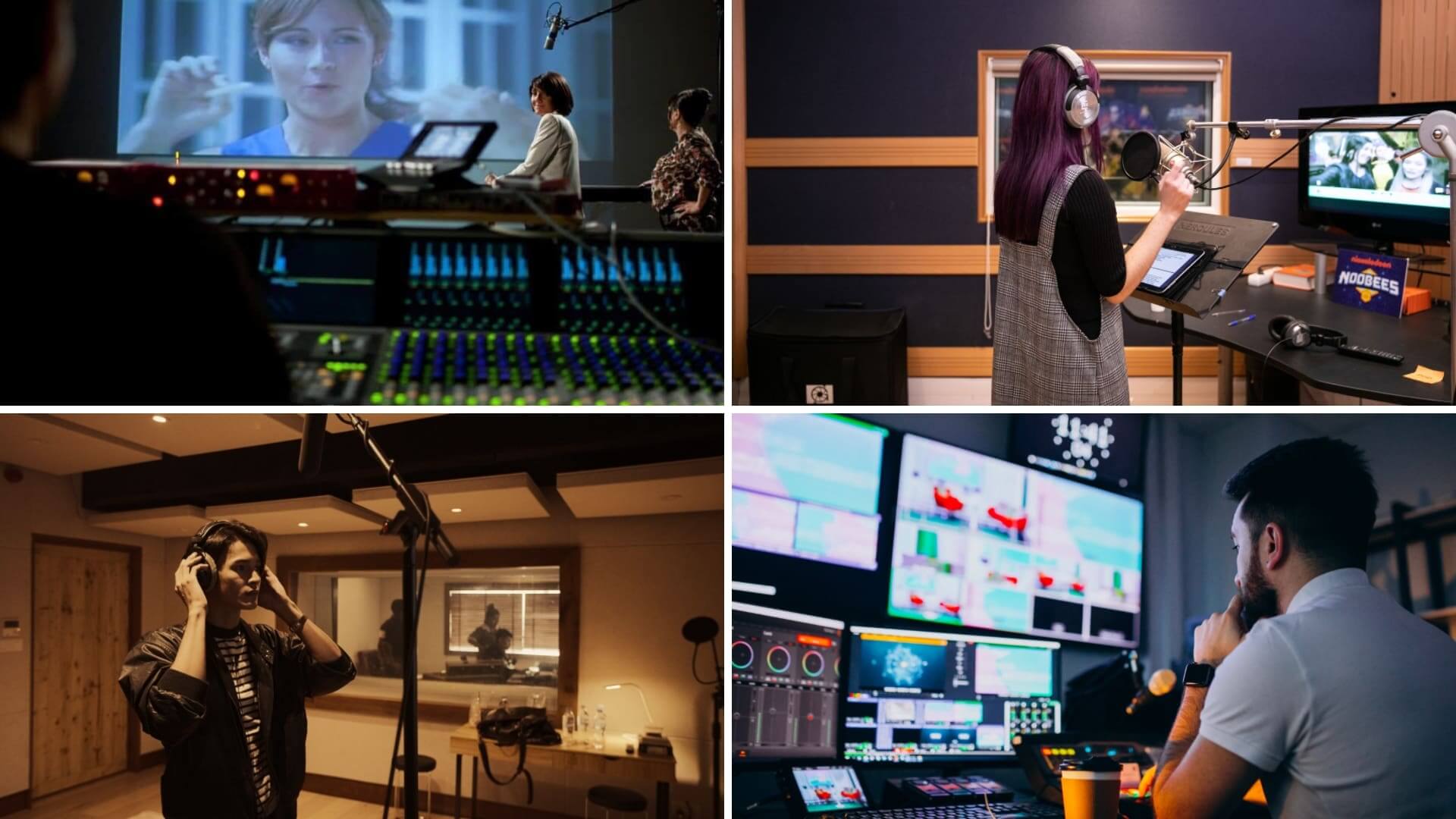D
ubbing is a fascinating, yet often overlooked component of film and television production. It is a process that is essential to the global circulation of media. Through the artistry of voice actors, technicians, and sound engineers, cinematic narratives are translated into diverse languages, cultures, and contexts. So, what is dubbing and how does it work? Let’s find out.
What is Dubbing in Film and Television?
First, let’s define dubbing
While the concept of dubbing may seem straightforward, it is a nuanced and complex practice. Let's delve deeper into the specifics of this essential process in media production.
DUBBING DEFINITION
What is dubbing in film and TV?
Dubbing is the practice of replacing the original voice track of a film or television show with a synchronized translation in another language. This is done to make the content accessible to non-native speakers of the original language. Beyond simply translating the dialogue, dubbing involves matching the translated speech with the lip movements and expressions of the actors in the original footage. Dubbing is a relatively recent phenomenon. It began in the early days of radio and television broadcasting, when commercial networks required programs to be translated into multiple languages so they could reach a broader international audience. Over time, dubbing has become an integral part of film and television production worldwide as access to media content continues to expand.
What is Dubbing Used For?
- Enhances viewer's comprehension
- Facilitates cultural exchange
- Widens audience reach
What is Dubbing Used For?
Foreign language dubbing
Translation of films and TV shows through foreign language dubbing is a vital practice that enables them to resonate with international audiences. This intricate process goes beyond linguistic translation, taking into account cultural nuances and idiosyncrasies to provide authentic and meaningful adaptations.
Cultural Adaptation
By considering cultural nuances, dubbing ensures that the content remains relatable and resonates with diverse audiences worldwide. It allows for a deeper understanding and connection to the storyline.
What Stranger Things Sounds Like In Other Languages
Language Barrier Breaker
Film and TV dubbing content into various languages allows audiences across the globe to fully immerse themselves in the narrative. It bridges the gap between different language communities and promotes inclusivity.
Rich Tapestry of Cultural Exchange
Through foreign language dubbing, diverse narratives can be enjoyed by people from different backgrounds. It fosters a global exchange of cultures and enriches the overall viewing experience.
Foreign language dubbing plays a crucial role in making films and TV shows accessible to a global audience. By breaking linguistic barriers and promoting cultural exchange, it ensures that diverse narratives can be appreciated and enjoyed by people from all corners of the world.
Related Posts
What is a Dub in ADR?
ADR Dubbing
Automatic Dialogue Replacement, commonly known as ADR, is another critical aspect of the dubbing process in film and television production. Unlike foreign language dubbing that focuses on language translation and cultural adaptation, ADR serves a different set of functions.
ADR is a specialized form of dubbing used primarily to correct or enhance the audio quality of a film or television production.
Introduction to Automated Dialogue Replacement • What is Dubbing
ADR Process
Involves the film's original actors re-recording their lines in a studio setting to fix audio issues or alter dialogue for clarity or narrative purposes.
Advancements in Sound Technology
ADR dubbing has become an integral part of post-production workflows, allowing filmmakers to maintain authenticity while ensuring clear and impactful dialogue.
Control and Quality
Provides control over the finished product, creating a high-quality soundscape that complements visual storytelling.
Meticulous Process
A time-consuming but critical process for providing an immersive viewing experience.
Having outlined the role and significance of ADR dubbing, let's now delve into a deeper understanding of the intricate process involved in dubbing, showcasing how this meticulous practice transforms and enhances the auditory experience for audiences around the globe.
Movie Dubbing Process
The process of dubbing
The dubbing process involves several key steps, ensuring a seamless and authentic adaptation of content into the target language. Here's a breakdown of the process:
How Pokemon is Dubbed into English
Translation and Cultural Context
The first step is translating the original script, considering cultural context and linguistic nuances specific to the target audience. This ensures that the dubbed version effectively communicates the intended message.
Casting Voice Actors
Next, voice actors are carefully selected based on their linguistic fluency and ability to capture the emotional nuances of the original characters. These actors bring the characters to life, maintaining the essence of the original performances.
Recording and Synchronization
Once the voice actors are cast, they record their voices while matching the rhythm, pace, and lip movements of the original actors. This synchronization is crucial in creating a seamless viewing experience for the audience.
How to Record ADR Dialogue • Filmmaking Tips
Mixing and Editing
After the recording phase, the dialogue is mixed and edited to integrate seamlessly with the video. This process ensures that the dubbed version aligns with the visual elements, creating a cohesive and engaging viewing experience.
By following these steps, the dubbed version retains the essence and quality of the original content, allowing viewers to enjoy the film or video in their preferred language.
Dubbing plays a vital role in expanding the reach of films and TV shows to new audiences. The meticulous process ensures that every audience can immerse themselves in the narrative and appreciate the content. Dubbing connects people worldwide, bridging cultures through the power of media.
Up Next
What is ADR in Film?
As we've unraveled the intricate process of dubbing and its significant impact on global media consumption, let's now delve deeper into one of its crucial components. In the following article titled, we will explore the specifics, techniques, and importance of Automatic Dialogue Replacement in the film industry.
Up Next: ADR Explained →
Showcase your vision with elegant shot lists and storyboards.
Create robust and customizable shot lists. Upload images to make storyboards and slideshows.
